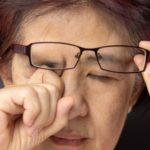View the full release on EIN Newswire
Largest Phototherapy Trial for Parkinson’s Disease
PhotoPharmics Finalizing Pivotal Phase 3-Equivalent Trial for Improving Overall Function
February 10, 2020, Salt Lake City, UT— PhotoPharmics announced today plans to conduct a pivotal trial to assess the efficacy of Celeste®, the company’s specialized phototherapy device to improve overall function in Parkinson’s disease (PD). The Celeste device builds on the company’s innovative Spectramax™ technology that has been used in previous human research. The company anticipates enrolling approximately 200 people in what will likely be the largest trial of its kind, the final details of which are forthcoming.
“We’re delighted to stage a trial of this size and importance,” said Kent Savage, president and CEO of PhotoPharmics. “This follows the success of our phase 2 trial in Parkinson’s which suggested meaningful improvement in function and quality of life in PD, in the setting of best medical management.” The magnitude of changes found on the MDS-UPDRS Parts 1+2 (experiences of daily living) (-4.0 points, p=0.037) and the PDQ 39 (-5.7 points, p=0.038) were both clinically meaningful.
Celeste phototherapy is based on the observation that the circadian system is dysregulated in PD, which can affect everything from tremor to sleep, cognition, mood, and fatigue.[1] This type of specialized phototherapy is intended to target the photoreceptors in the eye that are responsible for circadian signaling to the brain.
“A pivotal trial for medical devices is similar to a phase 3 trial drug trial,” said Dan Adams, chief science officer. “As patients reported in our prior trial, this may be the only treatment that improves functional abilities in PD when administered on top of current medication. We recently presented our new trial design to the FDA with a favorable review, and we are planning on recruiting participants for our trial in the second half of 2020.”
People with Parkinson’s disease and their caregivers may register to receive information about the upcoming trial at https://photopharmics.com/patient-experience/.
Focus of the Trial
Current treatments for PD primarily treat motor symptoms, and very few options exist for the debilitating non-motor problems that are also part of the disease. As Parkinson’s progresses, these non-motor issues become even more pronounced and are often the determining factors for quality of life and institutionalization.[2] In fact, the Movement Disorders Society has identified these debilitating non-motor problems as a major unmet therapeutic need.[3]
About PhotoPharmics
PhotoPharmics is a privately held, clinical-stage medical device company developing next-generation treatments for treating neurodegenerative disorders through the eyes. Company founders have 30+ years of research and experience in this field. They previously developed specialized light solutions now widely used to regulate circadian rhythms for seasonal affective disorder, sleep disorders, anxiety, and depression (acquired by Philips-Respironics in 2007).
Drawing from research and recent trials, PhotoPharmics is developing applications of specialized light across several neurodegenerative diseases. The company aims to make a clinically meaningful difference in patients’ lives by delivering safe and effective treatments. Learn more at www.photopharmics.com.
————————–
[1] Fifel K, Videnovic A. Light therapy in Parkinson’s disease: towards mechanism-based protocols. Trends in neurosciences. 2018 May 1;41(5):252-4.
[2] Schapira, A., Chaudhuri, K. & Jenner, P. Non-motor features of Parkinson disease. Nat Rev Neurosci 18, 435–450 (2017).
[3] Seppi K, Ray Chaudhuri K, Coelho M, Fox SH, Katzenschlager R, Perez Lloret S, Weintraub D, Sampaio C, collaborators of the Parkinson’s Disease Update on Non‐Motor Symptoms Study Group on behalf of the Movement Disorders Society Evidence‐Based Medicine Committee, Chahine L, Hametner EM. Update on treatments for nonmotor symptoms of Parkinson’s disease—an evidence‐based medicine review. Movement Disorders. 2019 Feb;34(2):180-98.





